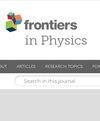Surface roughness measurement using microscopic vision and deep learning
IF 1.9
3区 物理与天体物理
Q2 PHYSICS, MULTIDISCIPLINARY
引用次数: 0
Abstract
Due to the self-affine property of the grinding surface, the sample images with different roughness captured by the micron-scale camera exhibit certain similarities. This similarity affects the prediction accuracy of the deep learning model. In this paper, we propose an illumination method that can mitigate the impact of self-affinity using the two-scale fractal theory as a foundation. This is followed by the establishment of a machine vision detection method that integrates a neural network and correlation function. Initially, a neural network is employed to categorize and forecast the microscopic image of the workpiece surface, thereby determining its roughness category. Subsequently, the corresponding correlation function is determined in accordance with the established roughness category. Finally, the surface roughness of the workpiece was calculated based on the correlation function. The experimental results demonstrate that images obtained using this lighting method exhibit significantly enhanced accuracy in neural network classification. In comparison to traditional lighting methods, the accuracy of this method on the micrometer scale has been found to have significantly increased from approximately 50% to over 95%. Concurrently, the mean squared error (MSE) of the surface roughness calculated by the proposed method does not exceed 0.003, and the mean relative error (MRE) does not exceed 5%. The two-scale fractal geometry offers a novel approach to image processing and machine learning, with significant potential for advancement.利用显微视觉和深度学习测量表面粗糙度
由于磨削表面的自仿射特性,微米级相机捕捉到的不同粗糙度的样本图像表现出一定的相似性。这种相似性会影响深度学习模型的预测精度。本文以双尺度分形理论为基础,提出了一种可以减轻自相似性影响的照明方法。随后,我们建立了一种集成了神经网络和相关函数的机器视觉检测方法。首先,利用神经网络对工件表面的微观图像进行分类和预测,从而确定其粗糙度类别。随后,根据确定的粗糙度类别确定相应的相关函数。最后,根据相关函数计算出工件的表面粗糙度。实验结果表明,使用这种照明方法获得的图像在神经网络分类中的准确性显著提高。与传统的照明方法相比,这种方法在微米尺度上的准确率从大约 50% 显著提高到 95% 以上。同时,该方法计算出的表面粗糙度的平均平方误差 (MSE) 不超过 0.003,平均相对误差 (MRE) 不超过 5%。双尺度分形几何为图像处理和机器学习提供了一种新方法,具有巨大的发展潜力。
本文章由计算机程序翻译,如有差异,请以英文原文为准。
求助全文
约1分钟内获得全文
求助全文
来源期刊

Frontiers in Physics
Mathematics-Mathematical Physics
CiteScore
4.50
自引率
6.50%
发文量
1215
审稿时长
12 weeks
期刊介绍:
Frontiers in Physics publishes rigorously peer-reviewed research across the entire field, from experimental, to computational and theoretical physics. This multidisciplinary open-access journal is at the forefront of disseminating and communicating scientific knowledge and impactful discoveries to researchers, academics, engineers and the public worldwide.
 求助内容:
求助内容: 应助结果提醒方式:
应助结果提醒方式:


